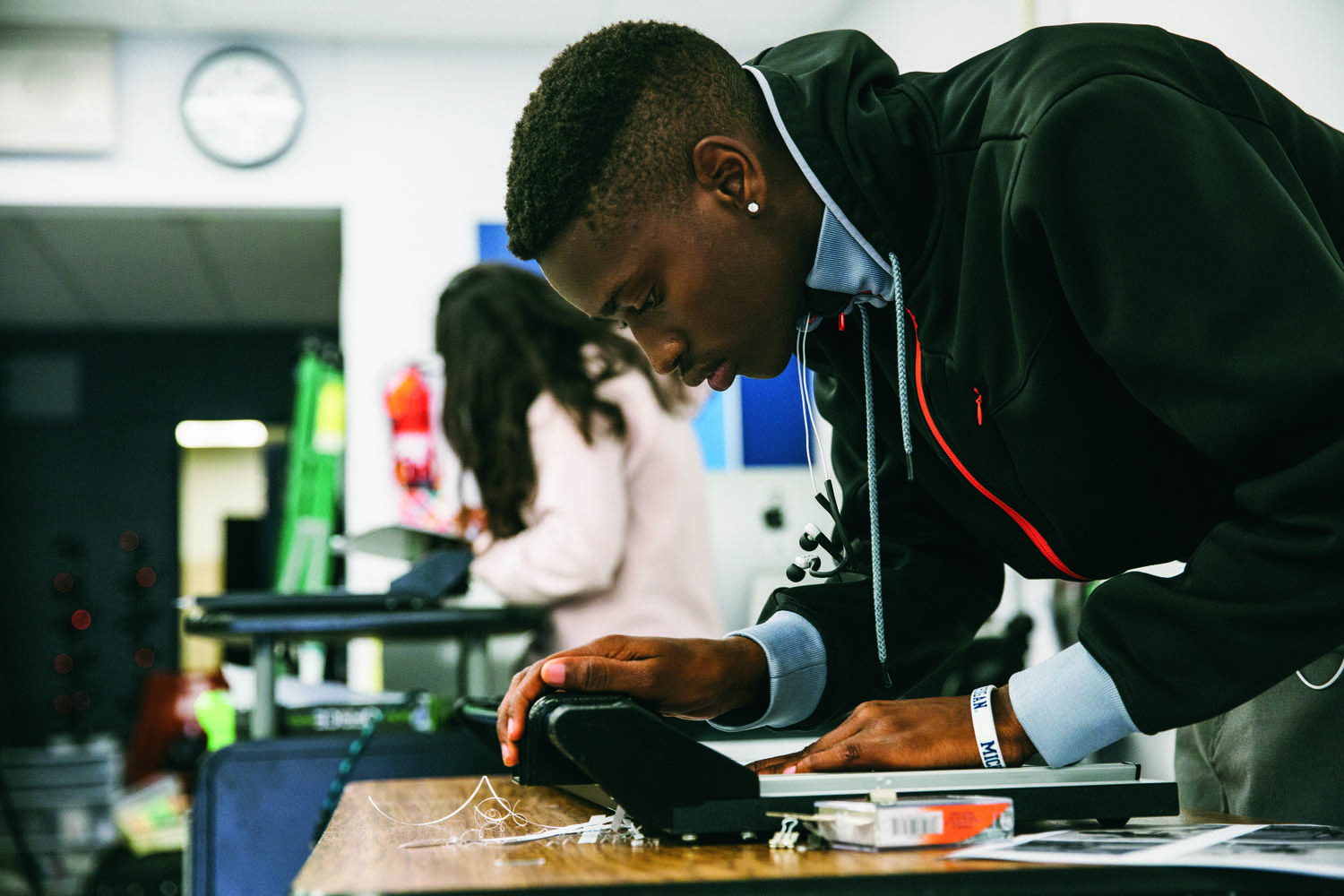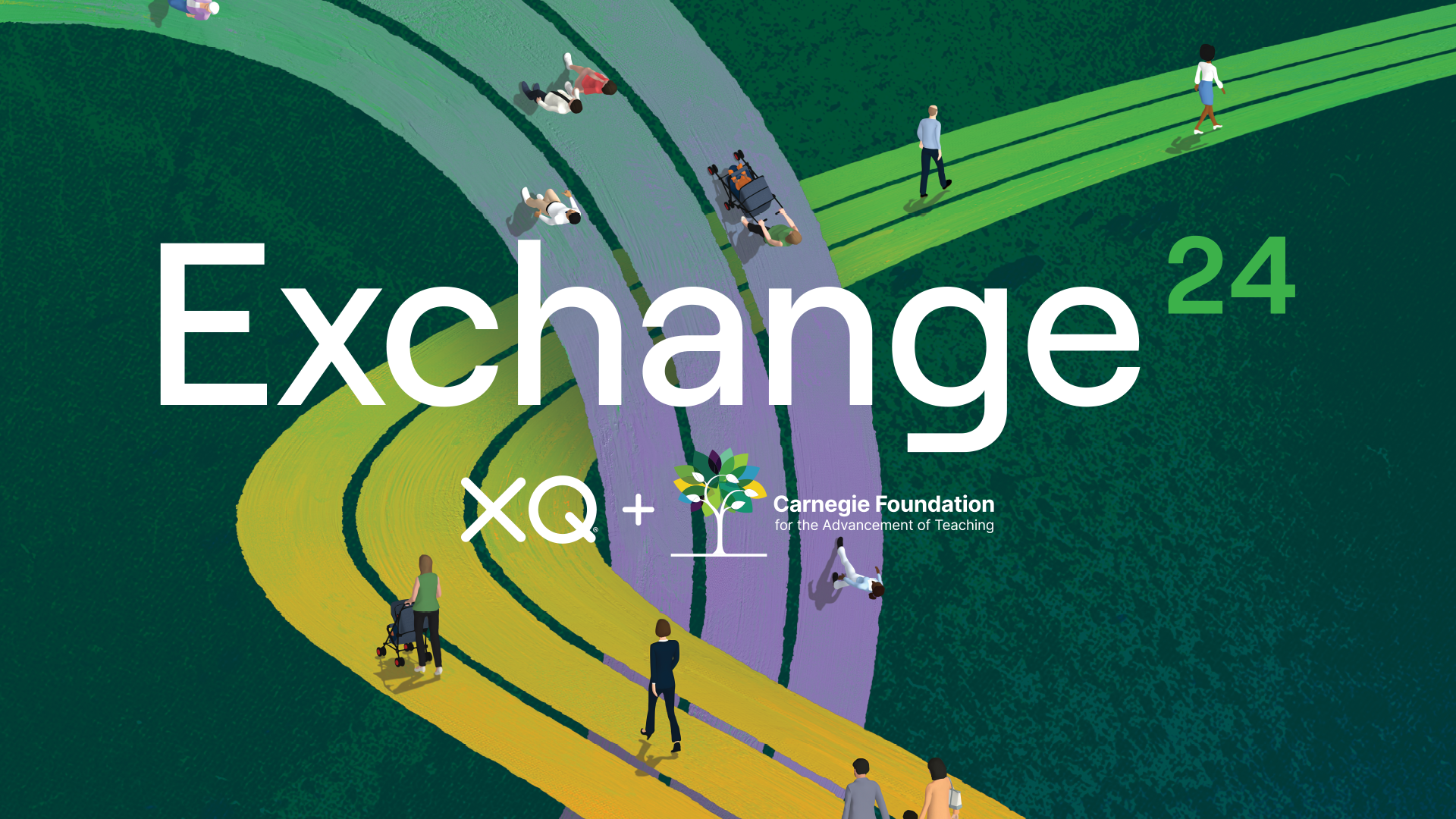The keys to teacher success at innovative schools
This educator at an innovative high school shares her keys to success. (Hint: it starts with student voice)

It’s all about support, guidance … and student input
When I was a student at the Urban Assembly Maker Academy, I had many amazing opportunities to contribute to the design of my school, including taking part in hiring the teachers that would impact my growth and learning as a student.
One of the most memorable experiences was sitting in the physics classroom after school and evaluating a science teacher candidate. I sat at a table with my friends as Liz Dowdell, the assistant principal, explained that we were going to meet and help evaluate a prospective teacher. The candidate came in energetically and proposed a plan: instead of a basic lesson with direct instruction and a few questions, we were going to complete a mini-project. He asked us to create an ideal evacuation plan for an extreme weather emergency. First, we discussed the situation and then we began to design an effective plan. Throughout the process, the prospective teacher circulated through the room, highlighting possible problems with our design, asking us questions, and helping us develop our final pitches.
Once the lesson was complete, we wrote down “glows”—areas that the prospective teacher had mastered—and “grows,” which are areas he could improve upon. We were engaged and excited that he had chosen to do a project-based, real-world lesson. But more important, his approach fit our school’s forward-thinking culture and philosophy. My fellow students and I discussed with Ms. Liz and others why we thought that he would be a great fit. He was hired and, as a teacher, delivered engaging, creative projects that consistently pushed student thinking.
As a student at UAM, I got to witness many demo lessons like this. However, I knew there was more to the hiring process. I spoke to Ms. Liz Dowdell, as well as three administrators in other schools across the country, to understand the process more fully. I realized the importance not only of hiring supportive, dependable teachers, but also the importance of schools’ support for teachers once they are hired.
In my conversations, it became clear that some of the most successful human capital structures in innovative schools focus on three areas: rubrics and criteria, student involvement, and extensive post-hiring support.
Rubrics and Criteria
At UAM, demo lessons and student input are followed by a conversation at the administrator level, guided by a rubric that helps evaluate the candidate’s performance. The rubric allows administrators to understand a candidate’s mindset and values and evaluate skills such as pedagogical knowledge, ability to use data, leadership skills, and responsiveness to student feedback. As part of the hiring process, the school invites candidates to events at UAM to help familiarize them with the school and its approach. This allows UAM staff and students to see if the candidate is a good match, and gives the candidate a chance to determine if the school is a good fit for them, too.
UAM’s approach to hiring has created a community of creative, open-minded, and talented teachers who understand the school’s mission and who work hard to support students. This practice continues today at UAM, and I found that it also happens in many other innovative schools all across the country. For example, the Young Women’s Leadership School of Astoria, a district-run public middle and high school in Queens, uses a one-pager that outlines key criteria and a thorough process to evaluate candidates during the hiring process. I spoke with Christy Kingham, an instructional coach at the school, about the process and the criteria, which includes qualities such as a deep love for teaching and an ability to collaborate with other teachers.
Student Involvement and Focus
Similar to UAM, the hiring process at Young Women’s Leadership School of Astoria includes student involvement. Students are part of the hiring committee to help evaluate candidates and assess their capabilities, skills, and ability to connect with students.
Another school that has an intentional approach to hiring mission-aligned teachers is the International High School at Langley Park, a public community school in Prince George’s County, Md., outside of Washington, D.C. Carlos Beato, the founding principal, shared details about how his team hires and supports strong teachers capable of thriving in a mastery-based school where all students are English language learners. Because of the school’s unique student population, teachers need to support students in both English language acquisition and in navigating a mastery system. But the school does not just hire ESL teachers. Rather, the school’s philosophy is that every teacher is a language teacher. The hiring process helps ensure the school can find and support teachers who will push students academically, further their thinking, and support and understand them.
When searching for teachers in a multi-round process, Carlos and his administrators rely on student input. Not only do students participate in a demo lesson, but after panel interviews, students help make the decision between the final two candidates. The students and staff look for candidates with strong instructional skills who also demonstrate cultural awareness, which allows them to fully understand both their diverse population and the different needs of all students. But it goes beyond that: “We don’t just focus on if a candidate is capable of working with kids from different backgrounds,” explained Carlos. “We want to make sure they can work with people with different ideas and experiences.”
Post-Hiring Support
Once leaders have the right people in the building, they need to support their teachers. Since most teacher preparation programs often focus on traditional methods and skills, school leaders need to support teachers to help them adjust to a new and innovative environment and ensure that they reach their full potential as both mastery and instructional experts and as youth development specialists. For many teachers, working at schools like Urban Assembly Maker Academy, Young Women’s Leadership School of Astoria, and International High School at Langley Park is much different than their previous jobs. And when teachers struggle to understand a new system, it can be difficult for them to help students understand that same system. Because of this, many school leaders provide coaching and professional development to help new teachers, in particular, understand the schools’ innovative elements.
I also spoke to Principal Kristen Kelly from the John Adams College and Career Academy, a district-run public high school in Cleveland, where the focus is on delivering thoughtful post-hiring support for teachers to ensure success. At this school, Kristen holds an intensive week of professional development four times a year to ensure that all teachers have a full understanding of mastery-based learning and are able to apply it in the classroom. While helping teachers adjust to the system, Kristen breaks down mastery into what she called “bite-sized” pieces, so as not to overwhelm incoming teachers with too much information. She makes sure the language she uses is understandable for all teachers no matter their comfort with the concepts of mastery.
Similarly, Christy at the Young Women’s Leadership School offers professional development, while making sure mastery is well understood by all teachers. She individually meets with teachers to help them plan within a mastery-based learning framework. Both schools give teachers regular opportunities to deepen their understanding of mastery, communicate their needs, and develop rich and robust experiences for students.
This focus on hiring and support helps ensure that staff are supporting students to be prepared for and succeed at the colleges of their choice. For example, I got into one of my top choice colleges. As my first year of college comes to an end, I can reflect on my transition from high school to higher education. While the year was not without its challenges, I am thriving. I’ve sought out my professors for support and feel prepared to do my best.
Innovative schools, especially mastery-based schools, require teachers to be open-minded, forward-thinking, and student-focused. Those teachers need to be supported by a system that provides support as they implement mastery and other innovative measures, like project-based learning or personalized learning. This, in turn, allows teachers to provide rich educational experiences for their students. I’m grateful to the teachers who have led me to where I am now, and I will continue to reap the rewards of their hard work throughout the rest of my college career and beyond.
Amanda Delaney









